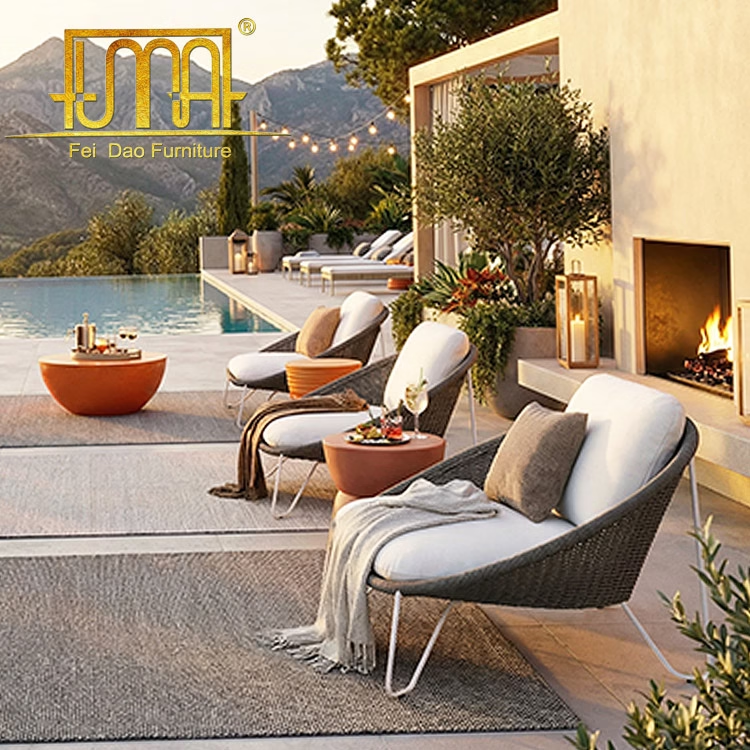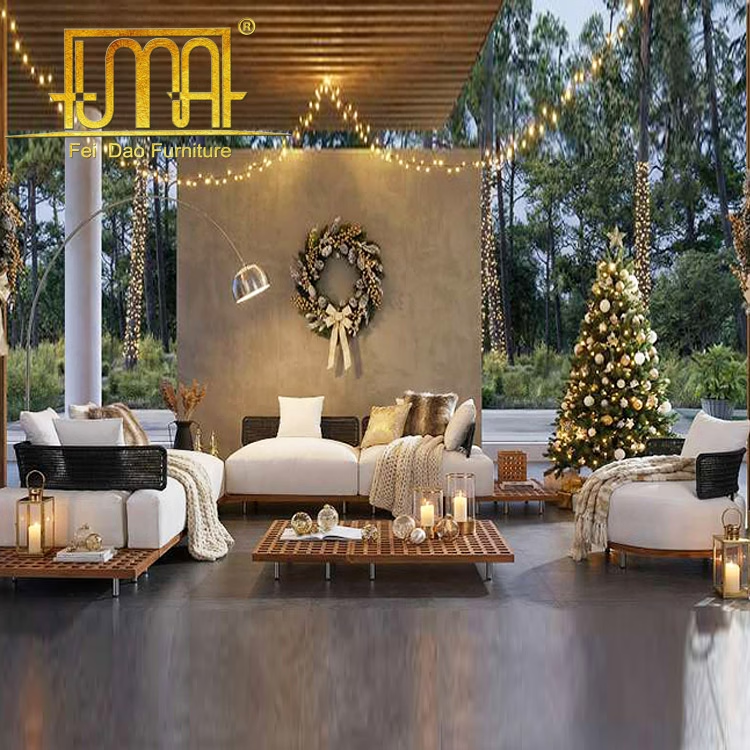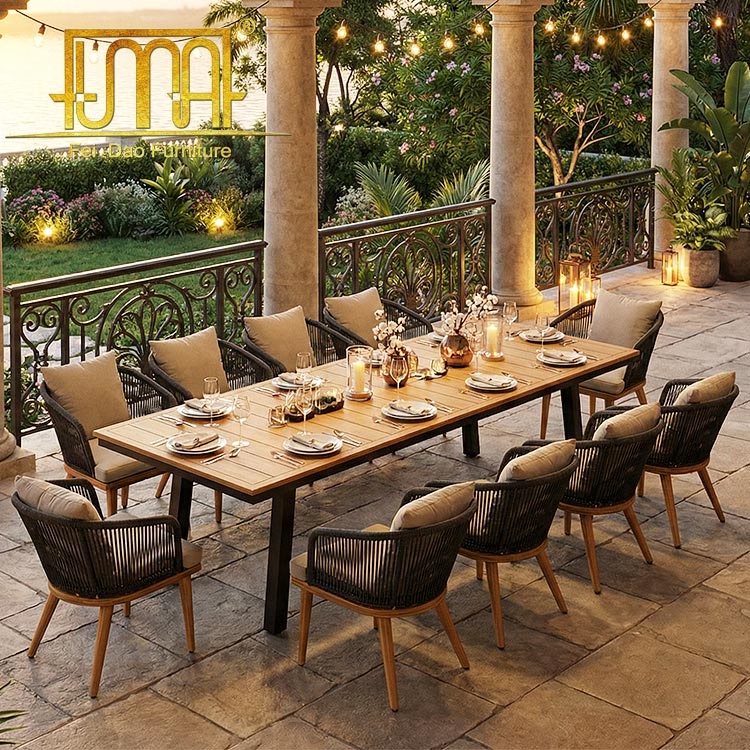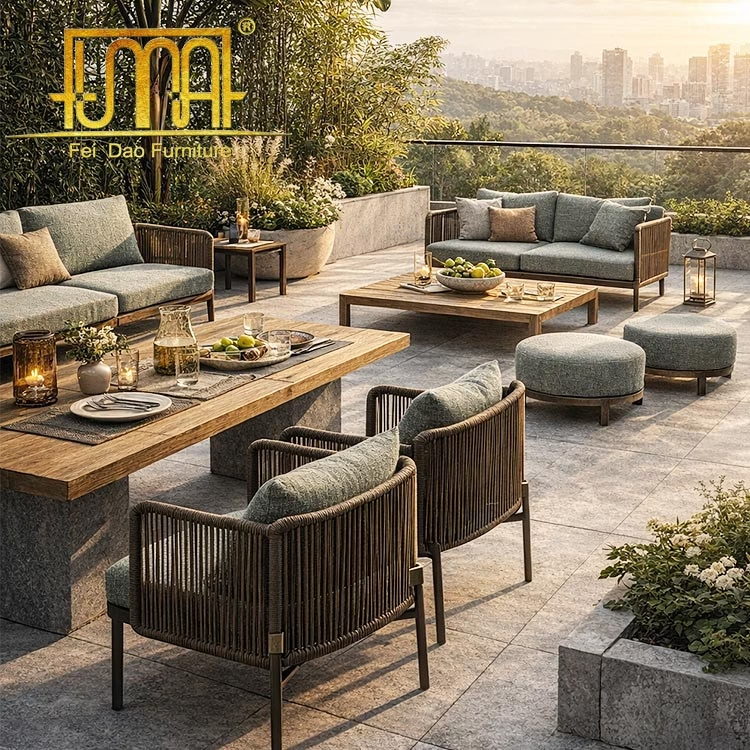Is Rattan Waterproof/Weatherproof?
The question of whether rattan furniture is weatherproof and/or waterproof is one we get often, and for good reason!
If you’re going to spend the time and money purchasing the perfect rattan furniture set, the last thing you want is for it to be ruined by rain, wind, or other weather conditions. The unpredictable weather we get here in the UK makes this an even more important point to consider.
In this post, we’ll answer the question of whether rattan furniture is waterproof and weatherproof and which conditions it can/can’t withstand.
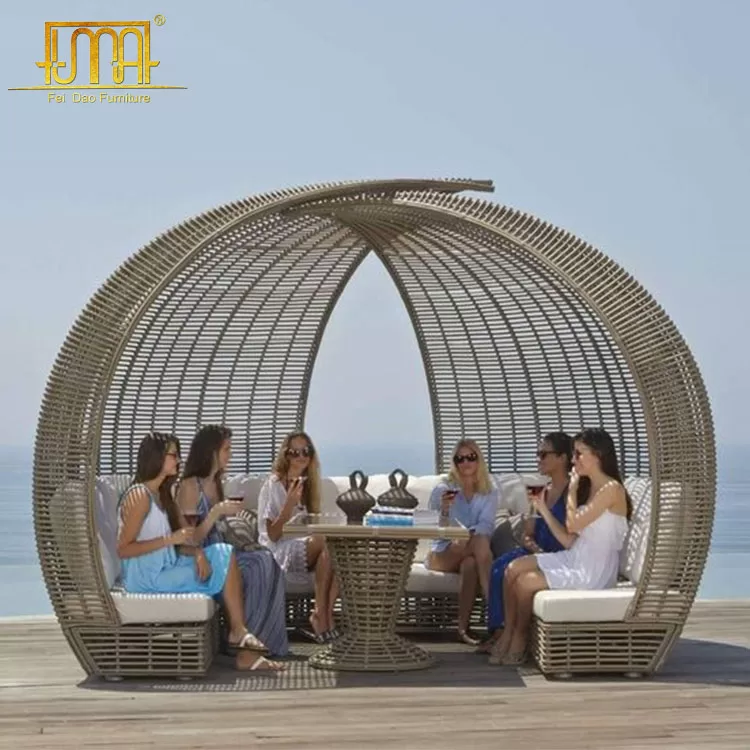
The rattan furniture we stock
Here at Feidao, we stock a broad range of rattan furniture. This includes rattan dining sets, bistro sets, and lounge sets, among various others. If you’re still in search of a new set for this summer, we’re confident that we have the perfect set for your garden. Click on the rattan garden furniture link in our main menu at the top of this page to see our entire collection!
Is rattan considered waterproof?
To cut right to the chase: no, rattan isn’t completely waterproof. Although both natural and PE rattan furniture is treated to ensure it can withstand most weather conditions, this doesn’t make it completely waterproof or immune to the elements.
However, there’s a clear distinction to be made between natural rattan and synthetic rattan. In pretty much all weather conditions, synthetic rattan beats natural rattan when it comes to durability. Since it’s made of a synthetic material, it is more resistant to water damage. There’s also less chance of it fading and it’s even less expensive – making it the perfect kind of wicker furniture for most homes.
What happens when rattan gets wet?
Although rattan furniture isn’t waterproof, it’s not like a few drops of rain will damage it in any way. All rattan furniture can handle an unexpected shower, whether it’s natural wicker or synthetic. Most likely, you can leave it outdoors exposed to the elements all summer without seeing much of a change.
That being said, if you want your furniture to last as long as possible you should try and limit the amount of time it’s exposed to the elements. Even though both natural and synthetic rattan are treated to prevent rust, rot, sun damage, and other forms of damage, exposure to the elements still takes its toll.
In general, this means storing your furniture indoors or using furniture covers when you’re not using it. This ensures they’re not exposed to water for a long period and helps keep your rattan furniture looking great for years to come.
If they are exposed to water for prolonged periods, for example, if you leave them outdoors uncovered all winter, they can get damaged in a variety of ways. Both synthetic rattan and natural rattan can grow mold and mildew, for example, which is not only unhygienic but also damages the chair. The rattan can also start to rot. Although it takes a while for rot to set in, once it does it’s nearly impossible to get rid of and it will likely only be a matter of time before you have to throw your chairs out. Synthetic rattan is more resilient to these sorts of issues, making it far more durable, but it can still occur.
The wicker pattern used to make rattan is what makes it look as good as it does, but it’s also what makes it more vulnerable to rot and mold. Weaving the strands creates many small nooks and crannies that can collect water, dust, and debris. This makes it more susceptible to rot than chairs that use straight wooden or plastic surfaces.
If it’s not treated properly by the manufacturer, or rattan furniture is exposed to extreme weather conditions for a long time, the woven strands can also start to unweave and fray. This isn’t as common with PE rattan furniture.
Is rattan considered weatherproof?
Weatherproof goes further than simply being waterproof. Freezing temperatures, ice, sleet, wind, snow… The list goes on. If the weather gets bad enough, nothing is weatherproof. That being said, certain weather conditions are easier to withstand than others.
Both natural and synthetic rattan are treated to help it endure most weather conditions, at least for short periods. You don’t have to worry if you forget to cover it for a day or two. However, it is only protected up until a point. Prolonged exposure to extreme weather over months or even years is always going to take its toll.
Freezing temperatures can be especially problematic if your furniture is wet. This is true for both PE and natural rattan but is especially true if it’s natural rattan. Water expands at freezing temperatures and can therefore cause rattan strands to break or bend. Minor damage to the chair can also get worse in these conditions since expanding water can cause cracks and crevices to get larger.
Constant expansion and contraction between strands can also cause them to start to loosen over time and can cause the protective coating to start cracking or breaking. Again, this is less of an issue with synthetic rattan.
An often overlooked aspect of damage caused by weather is UV damage. The sun’s rays can cause discoloration and fading if surfaces are exposed to the sun for long periods. This is true for both types of wicker furniture. That being said, any discoloration or fading will likely take several years to show and there are steps you can take to prevent it, like covering furniture when it’s not in use, weatherproofing it, and regularly maintaining it.
Can you make rattan weatherproof/waterproof?
Although you can’t make rattan furniture completely waterproof or weatherproof, there are steps you can take to keep your rattan furniture looking good for longer. Storing it in the proper conditions and just generally taking good care of it is always a good place to start.
Can I leave rattan furniture outside?
In the summer, you can leave rattan furniture outdoors. However, it can still be worth using a rattan furniture cover when you’re not using the furniture to protect it from UV damage. This will also help protect it from rain and ensure you’ll be able to enjoy the furniture for many years to come.
Throughout the rest of the year, we always advise people to store their rattan indoors or to use furniture covers. This protects your furniture from the elements, regardless of what the weather is like. It also ensures that your new rattan furniture maintains its looks for longer.
You can choose to leave it outside exposed all winter too, but this will result in wear and tear over the years. Well-kept furniture may last for ten years or more, whereas furniture left exposed outdoors all year round may only last five or six years.
Can the sun damage my rattan furniture?
The sun can damage your rattan furniture if no UV protection is applied to it. Although it takes prolonged exposure over many years, UV rays from the sun can cause the color to fade. This can result in your furniture looking dull, but it doesn’t compromise its integrity or damage it in any significant way. It should still be safe to sit on, even if the color has faded to some extent.
That being said, UV protection can prevent the color from fading and prevent splitting and cracking due to high heat. This will cause the colors to fade far slower, so most UV-protected rattan furniture won’t fade to any noticeable degree for at least a good few years, even with heavy sun exposure.
After some years, it’s normal for the colors to fade somewhat. This is unavoidable when objects are placed outside. However, high-quality furniture that’s cared for well will show far fewer signs of fading than untreated furniture that’s not maintained.
What about snow, ice, and wind?
Snow, ice, and wind can damage rattan furniture, although they all do this in different ways. Snow and ice can worsen existing damage by causing water in between cracks and crevices to expand. It can also bend and break rattan strands in the chair or sofa. In the long run, this can lead to strands peeling away and falling off.
Wind can damage the paint if it carries sand, but it can also cause debris to settle on your furniture. This debris can promote mold growth by creating damp conditions. In combination with freezing temperatures, this can also worsen damage done by ice and snow.
A set of furniture covers is a great way of protecting your wicker furniture from snow, ice, and wind. You can also choose to keep your furniture indoors in the winter which is probably the best way of ensuring your furniture stays in fantastic condition for as long as possible.
Can rattan furniture rust?
Natural rattan furniture is made of a type of wood whereas synthetic rattan is made of a synthetic material made to look like rattan. Neither of these materials rust, although they are susceptible to mold and rot.
That being said, many rattan furniture chairs have an aluminum or steel frame used to add stability, so it’s common for people to wonder whether it can rust. Both aluminum and steel are very resistant to rust and the furniture will likely need replacing way before rust causes any issues. Light surface rusting may occur after several years, but this doesn’t harm the furniture’s integrity and isn’t visible since it’s on the inside of the furniture. It will take well over ten years before any rusting reaches a point where it causes issues, so this isn’t something you need to worry about, assuming you purchase your rattan furniture from a reputable store.
Welcome to follow our Instagram, Tiktok.
Or contact us directly.
Want to read another article? Please click this: Stylish Outdoor Living Spaces


